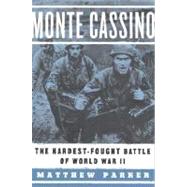
Note: Supplemental materials are not guaranteed with Rental or Used book purchases.
Purchase Benefits
What is included with this book?
| Foreword | ix | ||||
| Maps | xii | ||||
| Introduction: The Monastery and the Gustav Line | xiii | ||||
| PART ONE Sicily to Cassino | |||||
|
3 | (12) | |||
|
15 | (19) | |||
|
34 | (29) | |||
|
63 | (20) | |||
| PART TWO The First Battle | |||||
|
83 | (19) | |||
|
102 | (15) | |||
|
117 | (15) | |||
|
132 | (17) | |||
| PART THREE The Second Battle | |||||
|
149 | (27) | |||
|
176 | (13) | |||
|
189 | (26) | |||
| PART FOUR The Third Battle | |||||
|
215 | (14) | |||
|
229 | (18) | |||
|
247 | (24) | |||
| PART FIVE The Fourth Battle | |||||
|
271 | (21) | |||
|
292 | (19) | |||
|
311 | (15) | |||
|
326 | (15) | |||
| Postscript: Surviving the Peace | 341 | (15) | |||
| Acknowledgments | 356 | (2) | |||
| Appendix 1: A Typical British Infantry Battalion, 1943-44 | 358 | (1) | |||
| Appendix 2: Orders of Battle | 359 | (6) | |||
| Notes | 365 | (32) | |||
| Select Bibliography | 397 | (4) | |||
| Index | 401 |
The New copy of this book will include any supplemental materials advertised. Please check the title of the book to determine if it should include any access cards, study guides, lab manuals, CDs, etc.
The Used, Rental and eBook copies of this book are not guaranteed to include any supplemental materials. Typically, only the book itself is included. This is true even if the title states it includes any access cards, study guides, lab manuals, CDs, etc.
Excerpted from Monte Cassino: The Hardest-Fought Battle of World War II by Matthew Parker
All rights reserved by the original copyright owners. Excerpts are provided for display purposes only and may not be reproduced, reprinted or distributed without the written permission of the publisher.